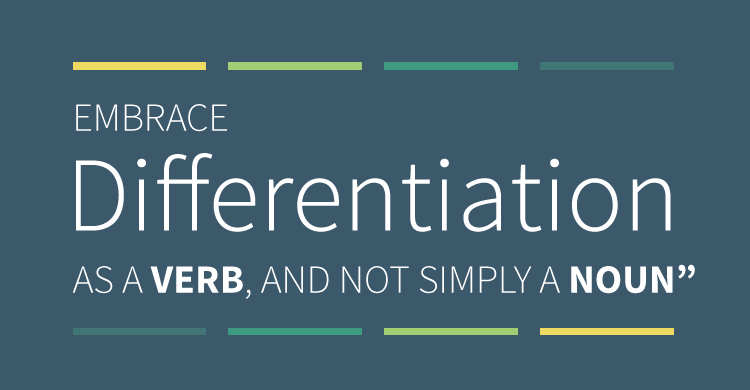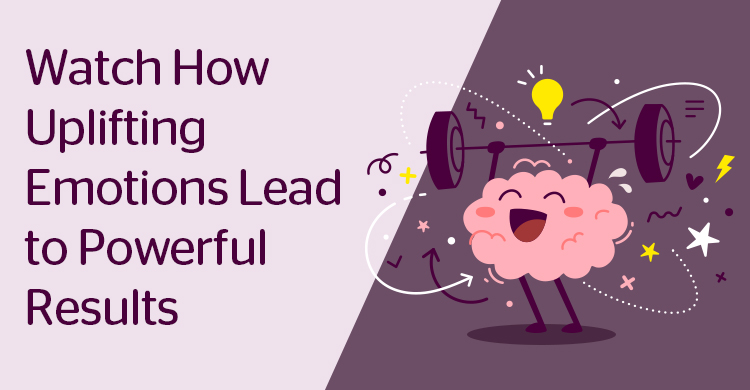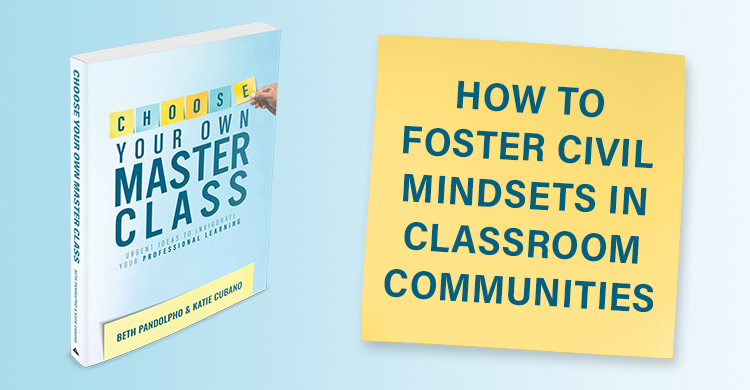Committed and experienced educators reading the latest and greatest information and recommendations on blended learning might be amused (or bemused) to note that one approved model of blended learning is Station Rotation. “You mean Centers,” the educator might ask? Or “Workshop?” Or “Small-Groups?” What exactly is different about Station Rotation? Why all the hubbub about blended learning?
Blended learning is very often associated with technologies’ potentials in the classroom. In that sense, we believe that blended learning – in all its iterations – can be simply defined (perhaps too simply) as digitally-enhanced differentiation…and that’s a wonderful thing.
The question ought to be: Why does Station Rotation seem new?
First, because we don’t want nomenclature to be a barrier in our conversation, let’s clarify the definition before we dive in. We admire and appreciate our colleagues’ debates and distinctions about key educational topics; we fully embrace these endeavors, unless they inhibit action – positive action of behalf of students and student learning. Therefore, for the sake of this blog at least, we will define blended learning as “blends” of print and digital, teacher-led and student-led, directed and constructed, and whole-group and small group pedagogies and strategies to better differentiate teaching and learning for all students. Moreover, while we respect possible distinctions, we will use differentiation synonymously with personalization and individualization. Students have different interests and passions; they learn through different and multiple styles and modalities; they have varied current levels of readiness and different strengths and needs. What we do to facilitate learning within the classroom responds to these realities, whether we label these practices differentiation, personalization, or individualization.
So back to differentiation. Why does Station Rotation, a sound and successful organizing principle to facilitate differentiation, seem new? Unfortunately, and in our experience, it’s because Station Rotation is rarely observed in action outside of primary classrooms (and probably not enough in these grade levels). We acknowledge that differentiation is bigger, more complex, more impactful, and more wonderful that what can, and cannot, be achieved through Station Rotation. Nonetheless, it’s a straightforward model, and like differentiation, it’s not new. So why does it feel that way?
First, let’s acknowledge that differentiation is hard to achieve. It takes time. (We would argue it takes more “proactive” time on the front end, which will be more pay off with less of a need for “reactive” time on the back end.) And yet it’s indisputably necessary. We have students in our classrooms and schools with significant differences in interests and passions; styles, and modalities; and they come to us with very different current levels of readiness – emotionally, behaviorally, socially, and academically. We MUST differentiate. How?
While addressing the HOW, let’s revisit other reasons that differentiation is not sufficiently present or successful in classrooms. We believe that, too often, differentiation is viewed as a noun, and not as a verb (see Hierck & Weber (2014), RTI is a Verb). Differentiation is first and foremost a way of thinking, planning, and executing. It’s a commitment to all students, whatever it takes; and whatever it takes will include doing things differently for different kiddos. There are important nouns associated with differentiation. Carol Ann Tomlinson could very easily be an educator’s one-stop-shop for all things differentiation, and she helps us view differentiation through four critical lenses: 1) content, 2) process, 3) product, and 4) environment. These lenses are vital and so helpful when doing the work. But the four lenses are nouns; the thinking behind content, process, product, and environment – the verbs – represent the why behind differentiation and points us toward the goals – high levels of learning for all.
There are certainly other factors (excuses?) that explain why we have not differentiated to a greater and more successful extent (we don’t have enough time, personnel, or materials) and we respect these factors but respectfully disagree that they must prohibit our abilities to serve students in a more differentiated manner. We’ve done it.
The last inhibiting factor we would like to expose is “classroom management,” otherwise known as “student behavior.” Consider Station Rotation. We don’t know of any empathetic educator who would not welcome the opportunity to meet with a small group of students in the classroom, targeting needs in a smaller setting, allowing for more frequent checks for understanding, and providing opportunities to give more immediate specific, corrective feedback. That’s the relatively easy part of Station Rotation. It’s those darn other stations, the ones without an adult to supervise and facilitate. What are students doing in these stations to: 1) keep them busy, 2) keep them quiet, or 3) provide them differentiated access to learning , allowing them to take greater responsibility for their educational journey (obviously the goal of stations is #3).
Which brings us back to technology and blended learning as digitally-enhanced differentiation. We do not NEED technologies to meaningfully engage students when working independently, that is, “away” from the teacher in the Station Rotation model. (There are thousands of teachers who are, and have been, differentiating and implementing Station Rotation in “technology-poor” classrooms). But it sure helps with “classroom management”…and planning. Students are more engaged when using devices and when working within digital environments. Why? In addition to the visual and auditory stimuli and the engaging tasks, the best of these digital environments meet students where they are and adapt to how they’re doing. Sounds like a few of the principles of differentiation that we try to make a reality in our classrooms – technology makes it easier.
So, to answer the question: Why does Station Rotation seem new? Perhaps because it finally seems doable. Or it’s no longer an enigma?
To be sure, teachers are critically essential in these digitally-enhanced, next-generation environments, and yet, the job may be transforming. Technology might make it easier, but technology doesn’t DO it. We are the guides, leveraging all tools in our toolkit to ensure success for all students.
Where do we go from here?
Let’s revisit Carol Ann Tomlinson’s (@cat3y) work, including her current and incredibly relevant recent work (http://www.caroltomlinson.com).
Let’s embrace differentiation as a VERB, and not simply as a NOUN.
Let’s embrace technologies and leverage them to better differentiate (while not forgetting that we do not REQUIRE technologies to differentiate.)
Let’s not make differentiation about us, as educators, but about students. Let’s not become dogmatic in the application of “tried and true” strategies, but become practitioners of awesome, doing the remarkable, and doing whatever it takes for all students to learn in truly authentic ways. Students will be the true judges of the effectiveness of differentiation. That’s what differentiation is about. The ultimate goal isn’t to develop a station and say, “Differentiation!” We must move from theories, strategies, and jargon to collaboratively creating opportunities where all students can learn remarkably. Let’s put differentiation into action on behalf of students and student learning and behave in the #divergED ways that our kiddos need and deserve.
[author_bio id=”77″]
[This is a post by author Chris Weber and guest contributor Nathan Lang.]







Blended learning provides individuals with the opportunity to enjoy the best of both worlds.
SemiDot InfoTech is a leading Web and Mobile Application Development Company based in India, which serve software facilities globally with proven proficiency in Custom website development, Custom iPhone Apps Development, Custom Android Software Development, Custom iPad App Development, Custom Windows Phone App Development and Custom Mobile Application Marketing services in UK, USA, Australia & India.
https://semidotinfotech.com/services/ios-application-development-company
This is a great resource on Blended Learning. I loved reading about your experience with the blended classroom technology.
I actually just compiled a really thorough guide of Blended Learning of my own. I think you might find it interesting to read. Take a look if you get a chance: http://www.assignmenthelp.net/blog/what-is-blended-learning/
Looking forward to more such delightful reads from your feed.
p.s. : If you are not a fan of lengthy text, here is a summary infographic titled What is Blended Learning http://www.assignmenthelp.net/blog/wp-content/uploads/2015/08/Blended-Learning.png